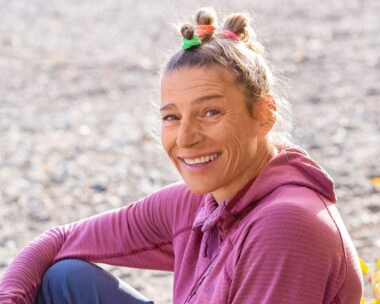Everyone thought leading Kiwi dog trainer Dan Abdelnoor was barking mad when he told people he would train his children the way he trained his dogs.
Before Dan, who is also known as “Doggy Dan”, became a father, he suspected some of his dog-training techniques would work well on children. And he proved it to his disbelieving wife, Jenni, when their children Stanley (3) and Sage (2) were born.
Now the Auckland trainer, whose videos have become a hit online, is sharing his techniques in his book What the Dogs Taught me About Being a parent, out this month.
Although not everyone will approve of his theory, Dan (40) says he’s seen first-hand how the techniques he used with his own dogs, Peanut, Inca and Moses, are right for his children.
“There’s never once been a time when I thought I’d apply a dog training solution to the children and it hasn’t worked,” he insists.
Dan’s not talking about things like banning kids from the dinner table or ruling out snuggles in bed, as he advises dog owners to do. But he says tactics such as being a calm, gentle “pack leader”, defining boundaries, and reinforcing desirable behaviour are methods that work as well on human children as they do on their canine counterparts.
Dan says the key to being a respected pack leader is getting the right balance between gentle and strong.
“A lot of parenting methods swing from spoiling them to using fear and aggression because the parents have had enough, then back to spoiling them again because they feel guilty. Dogs and children need something down the middle.”
For Jenni (35), being a pack leader means providing a reference point for her kids’ decisions. “When it gets tough or there’s some uncertainty, the kids do turn to me. It’s not about being super-firm but about being grounded and calm.”

Dan could happily take on 20 dogs, but the thought of 20 children is not so appealing. Photo
Often parents of problem kids need to look at modifying their own behaviour just as much as their children’s, Dan says.
It’s the same thing he has seen with dogs – a troublesome pet often becomes obedient when a trainer enters the room.
“People say, ‘So there’s nothing actually wrong with him, he hasn’t got ADHD or anything?’ I have to say, ‘No, it’s you, it’s what you are doing that’s causing the problem. But that’s great because that means you are the solution, too.’”
Jenni’s first reaction on being told that Dan wanted to write a book was, “Why now? Really, that’s terrible timing. We’ve got two young children. Couldn’t you wait 10 years?”
But clients were telling him to do it and the book was virtually writing itself, she says.
Jenni is quick to point out the couple are still finding their way – dog training techniques and all.
“We’re learning and we’re not afraid to share that learning.”
She knows what it’s like to react on impulse when it comes to decisions about kids. Jenni says sometimes she’ll be struck by “mother instinct” and have to think, “What did Dan write in his book again?”
And though he was prepared with his dog methods, Dan says there are aspects of fatherhood that have taken him by surprise.
“From 6am, it doesn’t stop until they go to bed at 9pm. When a puppy is that age, they sleep 12 hours a day.”
Jenni says although the pair probably won’t have any more children, “we’ll probably have another 10 of what Dan calls our ‘fur babies’.”
Susan Edmunds*
‘My book is about trying to help people see that we always have a choice as to how we react to a situation’ says Dan
DAN SAYS
1 Children and dogs feel secure when they know there are others above them in the pack, taking responsibility for the big decisions.
2 If you’re asking a child to behave differently, you must also be prepared to change.
3 If you give a reward for stopping bad behaviour,
you must be sure it can’t be misinterpreted as a reward for the initial bad behaviour.
4 Actions speak louder than words. Next time your child refuses to do something, show them calmly and in virtual silence what you want.
5 Keep your child’s – and dog’s – name special. You want them to associate it with positive things, not always being told off.
MIDDLE GROUND Kids and dogs need their ‘leaders’ to be both gentle and strong.
PHOTOS: FIONA TOMLINSON • HAIR & MAKE-UP: LUISA PETCH*




